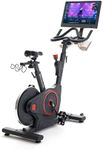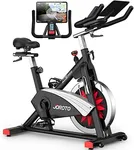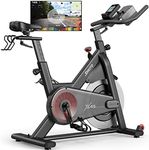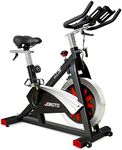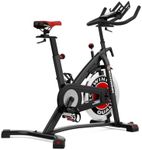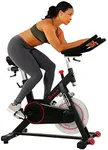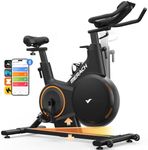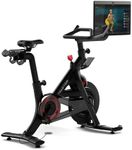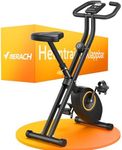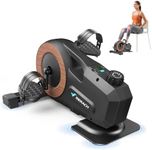Buying Guide for the Best Indoor Bikes
Choosing the right indoor bike can significantly enhance your fitness routine, providing a convenient and effective way to exercise at home. When selecting an indoor bike, it's important to consider your fitness goals, available space, and personal preferences. Understanding the key specifications will help you make an informed decision that aligns with your needs and ensures a satisfying workout experience.Resistance TypeResistance type determines how the bike simulates the feeling of riding on different terrains. There are generally three types: magnetic, friction, and air. Magnetic resistance is quiet and offers a smooth ride, making it ideal for home use. Friction resistance uses pads to create resistance and can be noisier but is often more affordable. Air resistance increases with pedaling speed, providing a more dynamic workout. Choose magnetic if you prefer a quieter, low-maintenance option, friction if you're looking for a budget-friendly choice, and air if you want a more intense workout that mimics outdoor cycling.
Flywheel WeightThe flywheel weight affects the smoothness and stability of your ride. A heavier flywheel (typically over 15 kg) provides a smoother and more stable ride, which is beneficial for intense workouts and simulating outdoor cycling. Lighter flywheels (under 15 kg) may be easier to start and stop, making them suitable for beginners or those who prefer less resistance. Consider a heavier flywheel if you're an experienced cyclist or plan to do high-intensity workouts, and a lighter one if you're new to cycling or prefer a more leisurely pace.
AdjustabilityAdjustability refers to how much you can customize the bike to fit your body. This includes seat height, handlebar height, and the distance between the seat and handlebars. Proper adjustability ensures comfort and helps prevent injury by allowing you to maintain proper posture while riding. Look for a bike with a wide range of adjustments if multiple people will be using it or if you have specific ergonomic needs. If you're the only user and have a standard body size, basic adjustability might suffice.
Display and ConnectivityThe display and connectivity features of an indoor bike can enhance your workout experience by providing feedback and entertainment. Basic models may have simple displays showing time, speed, distance, and calories burned. More advanced models offer connectivity to apps and devices, allowing you to track your progress, join virtual classes, or compete with others. If you enjoy tracking your fitness data or need motivation through interactive workouts, opt for a bike with advanced connectivity features. If you prefer a straightforward workout, a basic display might be enough.
Weight CapacityWeight capacity indicates the maximum user weight the bike can safely support. It's crucial to choose a bike that can accommodate your weight to ensure safety and durability. Most indoor bikes have a weight capacity ranging from 100 kg to 150 kg. If you're close to the upper limit of a bike's weight capacity, consider choosing a model with a higher limit to ensure stability and longevity. Always check the manufacturer's specifications to ensure the bike meets your needs.
Footprint and PortabilityThe footprint refers to the amount of space the bike occupies, while portability indicates how easy it is to move. If you have limited space, consider a bike with a smaller footprint or one that can be easily folded and stored. Portability features like wheels can make it easier to move the bike around your home. If space is not an issue, you might prioritize other features over size. However, if you need to frequently move or store the bike, look for a compact and portable model.

